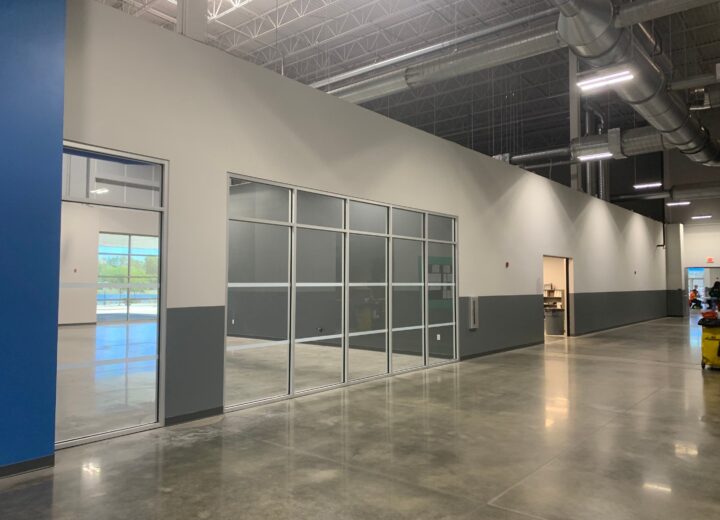
mit·i·ga·tion
noun
the action of reducing the severity, seriousness, or painfulness of something.
“the emphasis is on the identification and mitigation of pollution”
If you are unfamiliar with the painting industry you might ask yourself what is moisture mitigation and why is it important? The word ‘mitigation‘ has several different meanings, so it can be a bit confusing if you are not sure to which it is referring.
What is Moisture Mitigation?
Moisture mitigation in reference to the industrial and commercial industries refers to reducing or eliminating the effects of moisture that can transfer into or onto the surface of the floor. This type of mitigation is needed and used within the commercial, industrial and residential industries to help provide a necessary barrier against moisture intrusion.
A simple analogy can help you understand what moisture mitigation does;
Think of yourself washing your vehicle by hand with a wet sponge. You have on some excellent water resistant gloves while using the sponge, which keeps your hands from getting wet. Your rubber or water resistant glove is like the moisture mitigation system.
The Significance of Moisture Mitigation
Now that you know a bit more about what moisture mitigation is, let us go over some of the reasons why its role is so essential. Moisture mitigation can be applied to walls, but is mainly utilized on concrete floor systems.
- Concrete & Masonry Walls
First let us go over the need for moisture mitigation on concrete and masonry walls. This kind of mitigation can become necessary, especially when you have a structure that is in an area with high humidity.
If you are within a region that gets frequent rainstorms, or has been involved in a hurricane(s), then you should understand how moisture can seep into and through masonry or concrete walls if they have not been constructed or sealed correctly.
Some of the main issues that occur from such intrusions are the invasion of mold, mildew and bacteria – all of which can cause many problems.
No matter if you are building a new structure or have an existing one, you should make sure that the exterior walls are covered with adequate moisture resistant coatings.
Of course, moisture problems occur less on walls than on flooring systems, given the fact that there is a higher probability of constant moisture exposure on the ground in commercial or industrial spaces.
- Flooring
Many problems can start from the time that construction begins. If the laying of the foundation and floor system is not done correctly, it can create problems down the road.
One of the most significant issues we face with flooring systems is due to time constraints of the construction crew. When the slab is not allowed to cure to the measurement required, then critical steps have been skipped. Usually, no moisture barrier was applied to the substrate. If there was a moisture barrier applied, the surface is usually not cured properly. This will eventually produce significant problems.
Once the flooring has had time to cure, it should be tested to make sure that it is at the correct moisture level. Two different kinds of test that can be used to judge the amount of moisture within the slab:
- Calcium Chloride Test (which measures moisture vapor emission rate or MVER)
- Relative Humidity Test (RH)
When the curing is complete, a PH blocker coating is spread over it to inhibit moisture from leaching up from the slab. Even if a slab is constructed from concrete, it still contains a certain amount of moisture (which it requires to stay stable). Concrete can also absorb moisture from the ground.
Indications of Moisture Intrusion
The cost of moisture mitigation is not cheap, but it does prevent future problems that can occur which are even costlier.
The following are some of the signs that there is a problem:
- Adhesive Failure
- Blistering
- Bubbles
- Cracks
- Crazing
- Delamination Failure
- Discoloration
- Efflorescence
- Gapping
- Mildew or Mold Development
- Pop Outs
- Scaling
- Swollen Joints
Since the list of problems that can occur is expansive, the best choice to make is taking a preventative route at the beginning of the building stage.
If you are dealing with an existing structure that is in need of moisture mitigation, you will need to have the surface tested first and then have the floor or walls cleaned thoroughly before you can begin to apply any preventative coating(s).
Moisture Mitigation Products
Some of the coatings that can be used for moisture control on walls include:
1. Acrylic Elastomeric
2. Hydrophobic Paints
3. Latex
4. Silicone Resin Emulsion Paint
There are three main kinds of moisture systems or products that can help to diminish moisture intrusions on floors, which include:
1. Epoxy or Resinous Coatings
2. Cementitious Coatings
3. Preformed Membranes
If you need to have any moisture mitigation work completed, it is best to stick with a professional service that knows what they are doing, so that you will not have added problems in the future.






